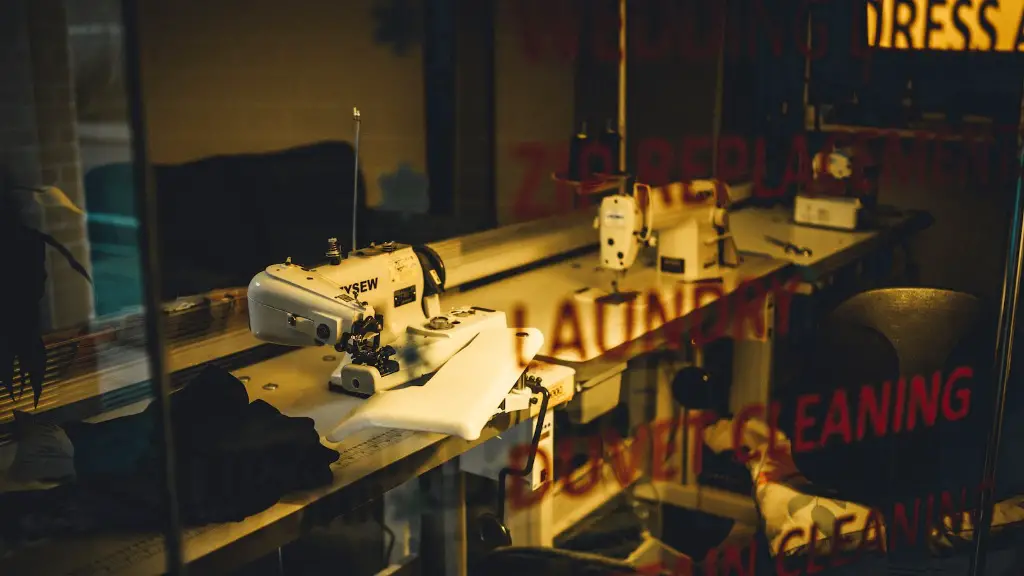What are Vintage Sewing Machines?
Vintage sewing machines are older devices used for sewing fabric, crafts and other items by hand. They are characterized by having a variety of features and a retro look. Many vintage sewing machines have metal and wooden parts, and some even have intricate details like intricate metal plates and decorations. They are usually only found in antique stores, antique auctions, and at collector’s auctions or fairs.
How much are Vintage Sewing Machines worth?
Today, many vintage sewing machines can be found for a fraction of the price of newer machines. Even some of the older, more sought-after machines can often be found for less than $200. That said, depending on the make, model, condition and locality, the value of a particular vintage sewing machine can range from a few hundred to thousands of dollars.
What makes Vintage Sewing Machines Valuable?
Vintage sewing machines are highly sought after by collectors and hobbyists due to their unique parts and design. In addition, certain vintage machines may have been made under certain patent laws, have special features, or links to famous brands. Different features go into determining a machine’s value. This includes factors such as the make and model, age, type of stitch, number of drawers, design features, and if it is a hand-crank or mechanical machine.
Which Brand is Most Valuable?
Amongst some of the most collectable vintage sewing machines are machines created by Singer, Singer Featherweight, and Jones. Companies such as White and Pfaff were also popular in the vintage market. Some of the rarest machines can be found on sites such as eBay.
Are They Still in Good Condition?
When debating whether or not to buy a vintage sewing machine, it is important to consider condition. Machines should be thoroughly inspected for wear and tear on gears, motors, and other parts before purchase. Give special attention to the bobbin cases and tension disks, as these pieces affect the machine’s ability to sew properly. Before purchasing, ask for a demonstration or take the machine to a technician for a professional inspection.
Where and How can I buy a Vintage Sewing Machine?
Vintage sewing machines can sometimes be found in antique stores, vintage markets, and flea markets. Online sites such as Etsy, eBay, and Craigslist are also great sources for finding vintage sewing machines. Be sure to use your discretion when making an online purchase. Always double-check the vendor’s rating and make sure they’re a legitimate seller before investing your money.
Are Vintage Machines Better than New Machines?
That depends on the individual’s needs and preferences! Newer models often offer more features, such as automatic needle threaders and faster speeds. On the other hand, some people prefer the old-school look and feel of vintage sewing machines. In some cases, depending on the type of machine desired, a vintage model may offer a more suitable type of stitch than a newer model.
Maintenance and Repair
When buying a vintage sewing machine, it is important to consider the cost of repairs and maintenance. Many vintage machines may require a technician to adjust and clean the parts. Depending on the make and model, some parts may be difficult to locate or may be too expensive for repair.
Do I Need Other Accessories for My Vintage Machine?
For a complete sewing experience, you may need to purchase additional accessories. Depending on the machine, you may need to buy a new bobbin case or special presser foot that cannot be purchased online. You may need to contact a specialty dealer or visit a vintage shop to find the necessary pieces.
Are Vintage Machines Right for Me?
Buying or collecting vintage sewing machines can be an enjoyable hobby. However, it is important to remember that these machines can be complicated to use, maintain and repair. Consider your own level of experience, budget and expectations before investing in a vintage sewing machine.
Costs Associated with Owning a Vintage Sewing Machine
When buying a vintage machine, take into account the ongoing costs associated with ownership. Along with the initial investment, it is important to factor in the cost of repairs, maintenance, and accessories. Professional services, parts and supplies can add up quickly.
Shipping and Insurance
When buying vintage machines online, remember to account for shipping costs and insurance. Shipping can be expensive and can add significantly to the total cost. Insurance is also important in cases where the machine is damaged during transport.
Reproductions and Reproduction Parts
One thing to watch out for when buying vintage sewing machines is reproductions and reproduction parts. Reproduction machines and parts are cheaper but are not as valuable as the real thing. Know the difference between the two and be sure to do your research before making an investment.
Buying Advice from Experts
Experts suggest to look for machines with the original parts such as needles, gears, bobbins and belts. To determine the machine’s authenticity, consult a sewing machine expert or look for key features such as the company’s logo, serial number, and make. If possible, try the machine before you buy it. It should be clean, responsive and make a pleasant sound as it sews.
Environmentally Conscious Options
Those interested in buying a vintage sewing machine have the option of being more environmentally conscious by investing in a refurbished model. Refurbished machines are those that have been reconditioned, cleaned and tested for safety. Refurbished machines can be a great alternative to buying a new machine and can often be found for very reasonable prices.
Do Your Research
Before purchasing a vintage sewing machine, make sure to do your research. Think about what type of machine and features are appropriate for your needs. Get advice from a professional before investing your hard-earned money. Consider the cost of repairs and maintenance and be sure to consider the cost of additional accessories and shipping.




